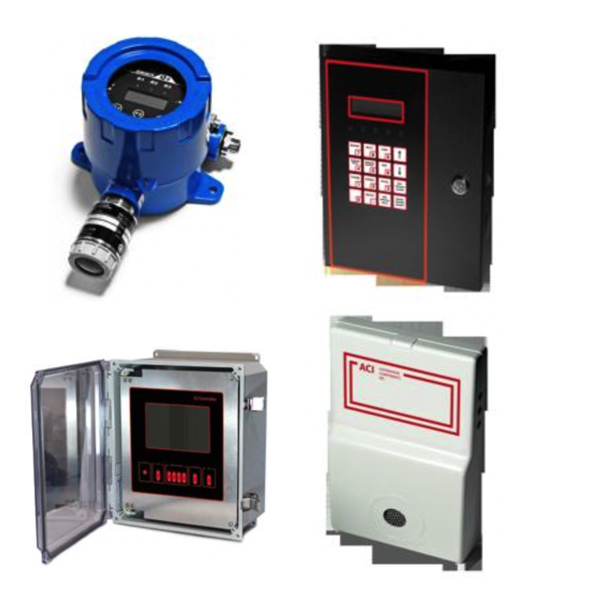Air Quality & Gas Detection

RSP Supply carries a full line of air quality and gas detection equipment designed to ensure safe, healthy, and compliant environments. Air quality monitoring systems are essential for detecting and measuring airborne pollutants, including carbon dioxide (CO₂), carbon monoxide (CO), sulfur dioxide (SO₂), nitrogen dioxide (NO₂), and volatile organic compounds (VOCs). These systems play a critical role in both indoor and outdoor safety applications, alerting users to hazardous conditions before they become dangerous.
Air quality monitors use a range of sensing technologies to measure gas concentration, particulate matter, and environmental parameters like temperature and humidity. In industrial and commercial settings, this data helps optimize ventilation, filtration, and environmental control systems to improve air quality and reduce exposure risks. Carbon monoxide and carbon dioxide are among the most closely monitored gases. Carbon monoxide, in particular, is colorless and odorless, making detection equipment vital for preventing poisoning and ensuring compliance with safety standards. Non-dispersive infrared (NDIR) sensors are commonly used for CO₂ detection, relying on precise light absorption measurements to determine gas concentration.
FAQs
Q: What causes poor indoor air quality?
Poor indoor air quality can result from limited ventilation, combustion sources, VOC emissions, radon, and particulate matter buildup from dust or smoke.
Q: What gases are commonly detected by air quality monitors?
Most air quality monitors detect gases such as carbon monoxide, carbon dioxide, nitrogen dioxide, sulfur dioxide, methane, and volatile organic compounds (VOCs).
Q: How do non-dispersive infrared (NDIR) gas sensors work?
NDIR sensors measure gas concentration by shining light through a sample and detecting how much is absorbed at specific wavelengths unique to each gas.
Q: Are air quality monitors used outdoors as well as indoors?
Yes, outdoor air quality monitors are used to track pollutants like ozone and sulfur dioxide, while indoor models focus on CO, CO₂, VOCs, and particulate matter.
Q: Why is continuous gas detection important?
Continuous gas detection provides early warning of dangerous leaks or poor air quality, preventing exposure to toxic gases and reducing fire or explosion risks.
Why Buy Air Quality and Gas Detection Systems from RSP Supply
RSP Supply provides reliable air quality and gas detection systems for industrial, commercial, and residential environments. Our sensors and monitors are selected for accuracy, durability, and ease of integration - helping you maintain safe, compliant, and efficient operations.

